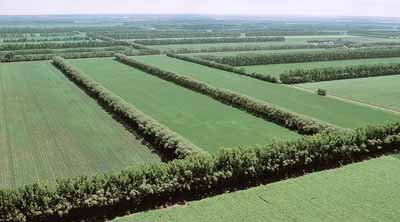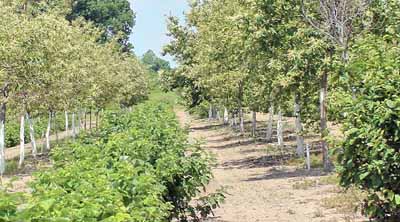AGROFORESTRY
Consultants
Bentrup, G.; Kellerman, T.; Schoeneberger, M.; Straight, R. US Forest Service, Southern Research Station, National Agroforestry Center.
General References
Garrett, H.E. (ed). 2009. North American agroforestry: an integrated science and practice. 2nd ed. Madison, WI: American Society of Agronomy. 379 p.
Jose, S.; Gordon, A.M. 2008. Ecological knowledge and agroforestry design: an introduction. In: Jose, S.; Gordon, A.M., eds. Toward agroforestry design: an ecological approach. Advances in Agroforestry. Dordrecht, Netherlands: Springer: 3-9. Vol. 4.
U.S. Department of Agriculture [USDA], Forest Service/Natural Resources Conservation Service. National Agroforestry Center. Working Trees Series. http://nac.unl.edu/workingtrees.htm. (October 24, 2012).
Maps
Fry, J.; Xian, G.; Jin, S.; Dewitz, J.; Homer, C.; Yang, L.; Barnes, C.; Herold, N.; Wickham, J., 2011. National land cover database 2006 (NLCD 2006). PE&RS. 77(9): 858–864. http://www.mrlc.gov/nlcd2006.php. (October 24, 2012).
U.S. Department of Agriculture. 2010. 2007 Natural resources inventory: soil erosion on cropland. Natural Resources Conservation Service. http://www.nrcs.usda.gov/Internet/FSE_DOCUMENTS/nrcs143_012269.pdf. (October 24, 2012) Illustration Agroforestry illustration: Lou Ann Reineke, Redcastle Resources; creative commons.org
Photographs
Silvopasture: Richard Straight, USDA Forest Service, National Agroforestry Center; creative commons.org
Riparian forest buffers: Nicholas A. Tonelli , flickr.com
Forest farming: USFS staff at the USDA National Agroforestry Center; creative commons.org
Special applications: USFS staff at the USDA National Agroforestry Center; creative commons.org
Alley cropping: Tracey Coulter; PA Bureau of Forestry; creativecommons.org
Windbreaks: Erwin Cole; USDA Natural Resources Conservation Service; Public domain











